The short story of fintech
Fintechs, treated as modern financial entities, seem to be a relatively new invention in the banking world, although the foundations for this area of business were established in…the 19th century. Before you, the history of fintech: from the creation of the first transatlantic link to innovative financial startups, without which today’s financial landscape would not be complete.
19TH CENTURY – THE BEGINNING
We know that dating the beginnings of the fintech industry to the nineteenth century may seem “a bit” strange daring, but indeed the year 1866 laid the foundations for the development of this branch of the economy. It was this year that the first transatlantic link was successfully laid, providing the basic infrastructure for the period of intense financial globalization that will take place soon – right at the beginning of the 20th century.
THE FIRST HALF OF THE 20TH CENTURY
1918 is not only the end of military operations under the First World War, but also the time of intensive development of technologies, especially telecommunications. And so, at the beginning of the interwar period, the first ever electronic money transfer system called Fedwire was created. Its operation reflects the spirit of the time – Fedwire was based on the strength of the telegraph signal and Morse code.
In 1920, the first flashes of the philosophy on which today’s fintechs are based appear – John Maynard Keynes published his book “Economic consequences of power”, the main thesis of which concerns the development of finance, based on a combination of achievements of contemporary technology with the requirements of the financial market.
According to experts on the subject, the 19th century and the first half of the 20th century are called the “Fintech 1.0” period.
THE SECOND HALF AND THE END OF THE 20TH CENTURY
The switch from analog to digital enabled the creation of the first Barclays ATM in history in 1967. This is the moment that symbolically marks the beginning of modern financial technologies. The digitization of the financial industry is developing at an impressive pace at that time. In the early 1970s, Nasdaq, the first electronic stock exchange, and SWIFT, a communication protocol used by financial institutions to make large amounts of cross-border payments, are created in the United States. The digitization of finance has increased due to the advancement of digital communication and transaction technology. Nasdaq and SWIFT mark the beginning of the financial markets and the communication protocols used today.
The 1990s, due to the intensive development of computers and the Internet, brought us online banking – from that moment both companies and individual clients can manage their finances from the computer screen. Internal processes and communication with clients are partially fully digitized and there is a clear shift in the way people interact with financial institutions.
Soon, the term “Fintech” appears for the first time in a wider circulation. In 1993, Citicorp established the Financial Services Technology Consortium, abbreviated as the Fintech project. This initiative is aimed at the cooperation of small, technologically advanced IT companies with banking institutions that want to develop the area of financial innovation.
A milestone in the development of electronic payments is the establishment of PayPal in 1998 – one of the first financial organizations whose mission and scope of services is very similar to the shape of today’s modern fintechs.
The achievements of financial technology at the end of the 20th century close the era of Fintech 2.0.
21ST CENTURY
The long-awaited 21st century begins one of the biggest financial crises in the world – 2008 marked the collapse of the global economic system, which resulted in a sharp decline in the level of confidence in banks. The crisis paradoxically created space for the development of modern, non-bank financial services. A year later, in 2009, Bitcoin was created – the world’s first cryptocurrency, which paved the way for other cryptocurrency and distributed ledger enthusiasts.
The area of 2010 is the contractual date of entry into the Fintech 3.0 era, in which we are today. The growing popularity of smartphones and mobile and mobile access to the web and financial services make the first startups from the financial industry appear on the market, driving the wave of new products and services. Even established banks are beginning to innovate in the spirit of start-ups, and it was this departure from the established banking position of the Fintech 2.0 era that defined Fintech 3.0. There are more and more financial entities on the market, such as neo-banks, challengers or digital banks, which combine the advantages of stable banking with a modern approach to creating financial technologies.
TODAY
Today, the rapid development of fintechs and modern financial institutions is no surprise to anyone. Innovative products and services offered to customers are actually the expected standard, and traditional banks are increasingly looking for a way to become part of this change. Although experts are outdoing each other in forecasting the upcoming financial and technological revolution, it is worth noting that it is already happening – for a long time now, fintechs have been redefining the financial market, changing the status quo and revolutionizing the assumptions of classic banking. It is a long and endless process – because what is innovative today will soon be history.
8 key functionalities we developed in 2020
The year 2020, although difficult due to the pandemic, has been extremely busy for us. For many months, we have been developing our BOS trading system, adding new functionalities and improving existing ones. Here is a brief summary of what we developed last year:
Event Manager
This functionality allows for efficient and trouble-free process modeling and event management of the entire system from the level of one, clear interface. The Event Manager is also of great help in the context of introducing changes as well as new financial products and services.
These kinds of tools provide total business flexibility. Especially now, when the competition in the financial market is significantly increasing, a system that allows for a flexible and quick introduction of changes to the existing and new customer service processes and their activities is one of the most important parts of the transaction architecture.
Multi-institutional cloud environment
This is an interesting solution for entities that want to offer their services within more than one institution. We have created an environment in which the customer can place any number of independent, functionally separated brands and institutions, while not losing control over management.
Comprehensive General Ledger
The synthesis and aggregation of accounting data from transactions carried out to the General Ledger are one of the critical areas of the transaction system. The multi-level and complexity of operations that must be reflected in the General Ledger register is, on the one hand, a complicated task, and on the other - a must, because it is a legislative requirement that cannot be circumvented.
Integration with the General Ledger as part of the BOS system means:
- full automation of processes related to data aggregation in the General Ledger;
- the ability to create a dedicated chart of accounts, define basic reporting attributes and complete freedom in creating links between operations on accounts and accounting accounts;
- advanced parameterization of all elements and processes, possible from the system user interface.
Parameters dump / load - possibilities of new environment cloning
Cloning of environments or verification of the business parameterization of the system is possible thanks to new dump and load mechanisms. Parameterization in the financial system is a series of registers, often closely related to each other. From the chart of accounts, through product segments, to transaction codes and interest rules. Process functionalities depend on a combination of these parameters. Currently, it is possible to export the system parameterization in its entirety or for individual areas. A business administrator with access to this feature can do so in an instant with a few clicks.
Transaction tagging
BOS allows you to label transactions and processes in any way you like. Automatic parameterization of tagging is possible from the level of the user interface, which significantly facilitates the search, ordering and filtering of posted transactions.
CIS - Customer Information System
The customer information management system is a separate BOS microservice that aggregates basic customer information from all institutions within the BOS infrastructure. The Customer Information System, which is an inherent part of the system, significantly extends the scope of information, allows to minimize the number of errors in the customer data held, and at the same time enables quick verification of user history.
Cashbacks
Our system customers can take part in partner programs that enable them to realize commercial rebates in the form of the so-called cashback. What does it mean? Refund of a part of the purchase amount to the customer's card after making the purchase with it. For this purpose, a separate microservice was launched, supporting both business partners, promotional offers, and the entire transaction path. The vast majority of transactions are carried out completely automatically, but the module also provides a path for manual pairing of offers and transactions. The use of our cashback module gives new value to the market. Trading bonuses are paid to clients immediately, not after a few days like with other systems. In this way, Fintechs using this module attract new customers by offering a card that realizes the benefit in an order of magnitude shorter than the competition.
CRS - System Relationship Management
CRS is another BOS microservice that allows you to create multi-stage access to accounts, both for individual and business customers. CRS is also a system of relations regarding account balances and limits. The advanced and modern structure enables intuitive management of all access parameters in such a way that they reflect the hierarchy within the user's internal organization.
7 BOS features which make your financial business grow
The financial sector has been undergoing significant business and technological changes for several years. Recent months have accelerated their pace and have exposed areas where banks and financial institutions need to develop in order to remain competitive in the market. Today, due to the largest socio-financial crisis since 2008, financial institutions have learned that building market value is not only about providing an attractive offer for customers, but also about having a technological basis, which, on the one hand, optimizes costs and automates work, and, on the other hand, provides a significant business advantage, which is reflected in financial results.

Optimization of internal processes, advanced analysis and aggregation of data, automation of customer service and implementation of attractive functionalities are challenges that most financial institutions face every day. The role of systems such as BOS is therefore support in identifying business challenges and providing solutions that address these problems. Through a set of basic functionalities, BOS helps to comprehensively build a business advantage, both in the area of back-office management and expanding business offers. In the article below, you will learn about BOS technologies that support development and help you successfully scale your financial business.
What technologies are we talking about?
1. Microservices architecture
2. Event Manager
3. Open API
4. Cloud Ready
5. Unique functionalities
6. Multibranding/Multi-institutionality
7. Integrated General Ledger
1. Microservices architecture
Today's dynamic business environment, driven by technological development and customers' openness to new solutions, requires the world of finance to quickly adapt to changing market expectations. There is space for new business ideas, provided both by banks and modern financial entities, such as fintechs and challenger banks. These entities build their business advantage based on technological solutions that offer a new quality in a specific segment of the financial business. Identifying the needs of a modern, technologically aware customer is a challenge, because the growing requirements of customers change much faster than a few years ago. Competitiveness in the financial services market forces market players to be ready to quickly change the offer, customer service processes, or even modify their business model. Classic transaction and back-office systems cope with such a dynamic financial ecosystem relatively poorly, so there is a need to implement solutions that address this problem. This approach requires technology that is functionally flexible, efficient and at the same time provides inexpensive support for a wide range of financial services, but with the possibility of using only selected elements to reduce the costs of business entities.
The answer to this demand may be a properly implemented microservice architecture that supports business and technological scalability. An organization that decides to base its IT architecture on microservices provides its business with the flexibility it needs today thanks to the ability to scale the system, both in terms of its performance and offer development. It is also important that microservices are a cost-optimal solution — thanks to this approach, you can tailor an IT solution to your goals and financial and organizational capabilities, without having to harness the full spectrum of solutions.
BOS, as a system based on microservices, allows you to freely configure functionalities covering individual business processes. Depending on the services offered, the financial institution selects a set of tools to support the processes. At any time, along with the development of the offer or its renewal, these tools can be replaced without significant investment outlays and complicated implementation procedures. The architecture of microservices in BOS is a universal solution both for entities that support a small volume of customers and their transactions, as well as for those large businesses that handle millions of financial operations.
2. Event Manager
Business flexibility, about which so much has been written, is not possible without the support of appropriate tools and systems. At the same time, increasing competition in the financial services market also requires optimization of costs, while introducing changes in the existing and new customer service processes and their activities. Event manager is a solution that can face the above-mentioned challenges. This functionality allows authorized system users to model processes and manage events of the entire system from the level of one, clear interface. Event manager is a great help in the context of introducing changes and new financial products and services. Measuring KPIs for individual processes and offer elements also allows for quick business verification, with little risk and optimization of implementation costs.
3. Open API
Each organization that provides financial services is a complex organism made up of teams of specialists, procedures, legislation, but also a network of complex connections between technological tools. Very often, the full architecture of IT solutions consists of several dozen smaller and larger systems, cooperating with each other — both inside and outside the organization. Reliable integration within these systems is the key to business success and the development of an institution that must be sure of the continuity of operation and security of its solution, as well as its easy expansion with new elements required for new business ideas. Open API built into the system means easy integration and open access to data and object management in the system without the need to involve development teams or the system provider 's resources. Integration in accordance with the standards of open banking (PSD2) facilitates the transaction processes within the API, while giving access to full documentation of all transactions. Open API significantly speeds up the process of implementing the required integrations, which is particularly important when creating new functionality — thanks to this, market verification takes place relatively quickly and in the cost-optimal way.
4. Cloud Ready
Fintechs and challenger banks, unlike traditional banks, do not have to focus on extensive technical infrastructure. The key for such organizations is the business idea and how to make it available to end customers quickly. They focus their efforts on this, because it is their competitive advantage. Technology is very important, but still only one of the elements for the efficient offering of business services. In the case of all kinds of neo-banks, both cost optimization and the reduction of resources necessary to bring the product to the market are key. Non-bank organizations operate in a slightly different reality than traditional banks — they have smaller budgets at their disposal, focus on the maximum reduction of fixed costs, and do not need to invest in infrastructure and resources — they are not limited by such strict legislation as in the case of banks, which means that they often use outsourcing in many areas of activity. And although it gives them a lot of freedom, it can also be a trap, because the lack of extensive infrastructure limits the development and scaling of the solutions offered. In this case, it may be a good solution to move the entire system infrastructure to the cloud.
First of all, running BOS in the cloud is a huge saving — there is no need to build or sublet server rooms or maintain the teams necessary to manage the infrastructure. The undoubted advantage of cloud solutions is their lower entry threshold, which is very significant especially in the initial stage of business development. It is also worth paying attention to the fact that the smaller the investment of time and resources, the greater the chance of quick feedback from the market.
Easy, cost-effective scaling makes it possible to increase or decrease the requirements for the efficiency of data processing and storage. The system is ready to work with both public clouds (including key major players in the market such as Microsoft Azure, Google Cloud Platform, Amazon Web Services) and private clouds.
5. Unique functionalities – Currency Cascade, Pooling, Account Virtualization
The key to the success of new financial institutions is the creation of a unique service or set of unique services that identify and address customer needs in an attractive way. The idea and the business perspective are one thing, but the big challenge is to cover the offered functionalities in technological solutions. In a nutshell, IT systems should support the ability to build a complementary set of services for which the demand exists in the market or will be created by a given institution. In addition to standard banking processes, BOS also performs unique business functions, designed to support and, in a way, anticipate customer needs. Deep process automation and high-level parameterization of the system provide space for the development of functionalities and adapting them to market requirements. BOS implements this goal through a set of unique solutions, such as: currency cascade, pooling and account virtualization.
Currency cascade is the automatic use of the client's funds accumulated in various currencies during the execution of the transaction, in the case of lack of funds on the main account or on the account kept in the transaction currency.
Pooling consists in collecting funds from the indicated accounts required to make a transfer transaction, regardless of the transaction currency.
Account virtualization is a mechanism for creating virtual accounts within the groups of available identifiers, in order to reflect balances and transactions on accounts held e.g. in other banks (this is important from the point of view of PSD2) or to enable analytical breakdown into individual clients for synthetic accounts (e.g. mass payment).
6. Multibranding/Multi-institutionality
Searching for niches in today's market is a challenge that often leads to the offering of financial services by institutions from outside this industry, e.g. payment services, granting loans and credits, or enabling funds to be deposited (saving, prepaid services, etc.). These entities find ideas for the optimization of these processes, but are unable to implement them or do not have sufficient financial resources to implement them on their own. The solution is provided by specialized institutions (banks, fintechs) that can offer financial services (white-labeling) on behalf of companies from outside the industry. However, they must implement it in a transparent manner, but at the same time tightly separated from their own financial activities and those carried out for other external entities.
White-labeling, provided by the BOS system, is a very interesting option for companies wishing to provide services to other entities in the financial services market, as it gives the opportunity to create brands and institutions that are functionally separated from each other. It is also the ease of defining subsequent units while maintaining the possibility of aggregation within the entire institution, at the level of independent system parameterization. Advanced parameterization also allows for an independent product and price offer, along with full separation of the chart of accounts, main books as well as data and reports of individual institutions.
7. Integrated General Ledger
One of the key and also complex contact points of transaction systems is their integration with the general ledger, which synthesizes accounting entries from transactions. It is a critical element in terms of responsibilities and reporting requirements at every level of business management in the financial area. Each transaction that takes place in the transaction system must be reflected at the level of accounts, which in turn must be managed by the financial and accounting services of the institution. Integration with the general ledger is therefore a set of multi-level and complex operations that must be linked in an efficient and flexible manner with the general ledger accounts. When addressing this problem, BOS offers fully automated integration with its own general ledger as standard. The solution includes both creating a dedicated chart of accounts, defining basic reporting attributes and full freedom in creating connections between operations on bank accounts and ledger accounts through a comprehensive transaction creation mechanism in the system. Moreover, the parameterization of all elements and processes is possible from the level of the system user interface. The result of the General Ledger system is automatic generation of postings and a complete picture of all General Ledger transactions. By offering multi-institutionality, the system guarantees full data separation also at the General Ledger level, allowing for the aggregation of accounting data for all brands within the institution that provides these services.
High scalability and flexibility are elements that are necessary for financial institutions to be able to successfully operate in a changing business environment. The ability to test various business models, the ease of modifying the offer, and creating solutions attractive from the customer's point of view allows you to build a market advantage in the competitive world of finance. However, in order to successfully implement business assumptions, they must be supported by technology that will not only be reliable, but also provide a set of tools addressing current and future market challenges. BOS is a response to the challenges that financial institutions face on a daily basis — the functionalities of the system cover the key areas of the financial ecosystem's operations, while maintaining cost optimization and the necessary business and development orientation.






